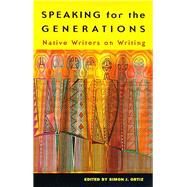
What is included with this book?
| Introduction: Wah Nuhtyuh-yuu Dyu Neetah Tyahstih (Now It Is My Turn to Stand) | |
| Interior and Exterior Landscapes: The Pueblo Migration Stories | p. 2 |
| Breaking the Silence: Writing as "Witness" | p. 26 |
| In the Cycle of the Whirl | p. 50 |
| Immersed in Words | p. 72 |
| Seeds | p. 92 |
| How My Ghosts Got Pale Faces | p. 118 |
| Voice of the Land: Giving the Good Word | p. 148 |
| Land Speaking | p. 174 |
| The Stones Will Speak Again: Dreams of an Ah Tz'ib' (Writer) in the Maya Land | p. 196 |
| Notes | p. 217 |
| Contributors | p. 225 |
| Table of Contents provided by Blackwell. All Rights Reserved. |
The New copy of this book will include any supplemental materials advertised. Please check the title of the book to determine if it should include any access cards, study guides, lab manuals, CDs, etc.
The Used, Rental and eBook copies of this book are not guaranteed to include any supplemental materials. Typically, only the book itself is included. This is true even if the title states it includes any access cards, study guides, lab manuals, CDs, etc.